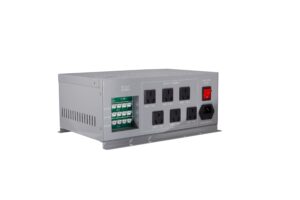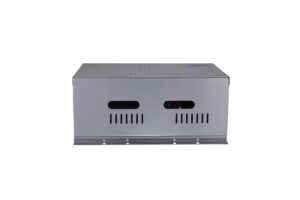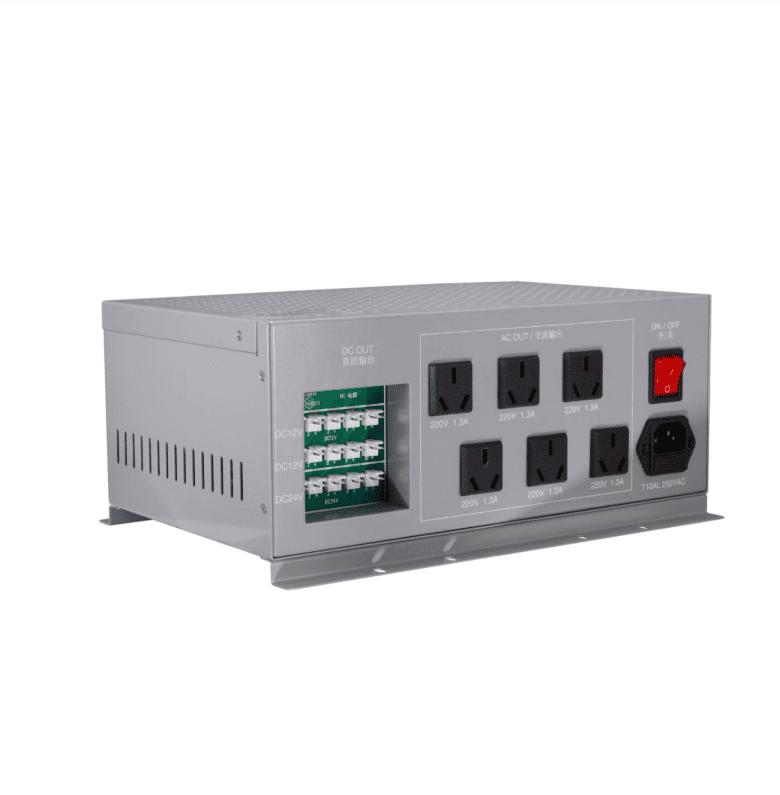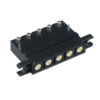How Do Power Switch Power Supplies Ensure Stable Performance for Electronic Devices?
In today’s world of fast-paced innovation, electronic devices require stable, efficient, and reliable power sources. Whether in industrial automation, energy systems, or transportation, the power switch power supply plays a crucial role in maintaining performance stability. But how exactly do these systems achieve such efficiency and dependability? This article explores the technology, working principles, and benefits of power switch power supplies, and why choosing Aplôture ensures superior quality for every application.
What Is a Power Switch Power Supply?
A power switch power supply, often known as a switching power supply, is designed to convert electrical power efficiently by rapidly switching on and off using semiconductor components such as transistors or MOSFETs.
Unlike traditional linear supplies, switching models offer high efficiency, compact design, and excellent thermal control—ideal for both industrial and consumer electronics.
Key Functions:
-
Voltage Conversion: Converts AC to DC or one DC level to another.
-
Power Regulation: Maintains a stable output despite voltage fluctuations.
-
Energy Efficiency: Reduces energy loss through fast switching.
-
Protection: Guards devices against overvoltage, short circuits, and thermal overloads.

Why Stable Power Supply Matters
Unstable power can damage sensitive electronics, cause malfunctions, and shorten device lifespan. That’s why regulated power supplies are essential in industries where precision and reliability are non-negotiable.
Industries That Depend on Stable Power:
-
Automation and Robotics: Ensures sensors, actuators, and PLCs run smoothly.
-
Telecommunication: Maintains consistent network equipment operation.
-
Energy and Utilities: Powers control panels and monitoring instruments.
-
Transportation: Supports LED displays, control modules, and safety systems.
When stability meets efficiency, productivity and safety improve simultaneously.
How Power Switch Power Supplies Work
1. Conversion Process
A typical switching power supply converts AC input to DC output using four main stages:
-
Rectification – Converts alternating current (AC) to direct current (DC).
-
Switching Regulation – Uses a high-frequency switch to control energy flow.
-
Transformation – Adjusts voltage using compact transformers.
-
Filtering and Feedback – Smooths output and maintains constant voltage.
2. Energy Efficiency
The rapid switching minimizes heat generation, resulting in energy efficiency often exceeding 85%, compared to 60–70% in linear supplies.
3. Compact Design
Because less heat is generated, components can be smaller. This allows Aplôture to design compact power switch power supplies perfect for space-limited applications.
Advantages of Using Power Switch Power Supplies
1. High Efficiency and Low Heat
Switching designs waste less energy as heat, extending device lifespan.
2. Lightweight and Compact
Eliminates bulky transformers, making them ideal for portable or embedded electronics.
3. Wide Voltage Range
Handles varying input voltages while delivering stable output—crucial in global or industrial operations.
4. Excellent Protection Features
Built-in overvoltage, short-circuit, and thermal protection safeguard devices and operators.
5. Cost-Effective Performance
Though slightly more complex, they offer long-term savings through durability and reduced energy costs.
Applications Across Industries
| Industry | Applications | Benefits |
|---|---|---|
| Industrial Automation | PLCs, Sensors, Servo Drives | Reliable power for precise control |
| Telecommunications | Routers, Base Stations | Continuous uptime and stable signals |
| Energy Systems | Solar Inverters, Meters | Efficient conversion and regulation |
| Medical Equipment | Diagnostic Tools | Safe, low-noise power supply |
| Transportation | Displays, Monitoring Systems | High vibration and temperature tolerance |
Each application benefits from the consistent output and high efficiency that only well-engineered power switch power supplies can provide.

How Apluspower Ensures Quality and Reliability
Choosing the right supplier makes all the difference. At Apluspower, we combine advanced manufacturing techniques, rigorous testing, and international compliance standards to deliver high-quality switching power supplies.
Why Choose Apluspower:
-
Solutions personnalisées: Tailored voltage, current, and size options.
-
Global Standards: CE, RoHS, and ISO 9001 compliance.
-
Durability Testing: Ensures long lifespan even in harsh environments.
-
B2B Expertise: Serving distributors, manufacturers, and industrial clients worldwide.
With Apluspower, clients gain access to a reliable partner for consistent and scalable energy solutions.
Best Practices for Selecting a Power Switch Power Supply
When choosing a power switch power supply, consider these essential factors:
-
Power Rating: Match output wattage to device demand.
-
Input Voltage Range: Ensure compatibility with local or global systems.
-
Efficiency Level: Look for ≥85% efficiency for long-term savings.
-
Protection Mechanisms: Opt for built-in safeguards for overload and short-circuit conditions.
-
Certifications: Confirm CE, RoHS, or UL compliance.
These factors ensure long-lasting performance and system safety.
Conclusion
Power switch power supplies are the backbone of modern electronics, enabling efficient, reliable, and compact energy conversion for industries worldwide. Whether you’re in manufacturing, energy, or communications, choosing Aplôture guarantees superior quality, stability, and service. Our technology-driven approach ensures your systems perform flawlessly—today and in the future.
FAQ
Q1: What’s the difference between a linear and switching power supply?
A linear supply uses continuous regulation with more heat loss, while a switching supply rapidly toggles current for higher efficiency and compact size.
Q2: Can power switch power supplies handle voltage fluctuations?
Yes. They automatically adjust and regulate output, ensuring stable voltage even when input levels vary.
Q3: Are Apluspower supplies suitable for industrial automation?
Absolutely. Apluspower’s solutions are designed for high reliability, offering protection, durability, and consistent performance for automation systems.



Laisser une réponse